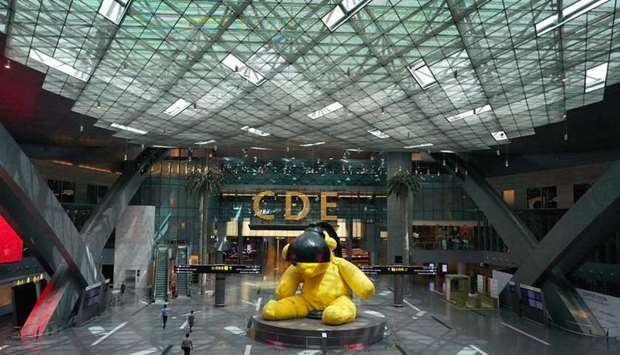Hamad International Airport (HIA), in its mission to preserve Qatar’s environment by decreasing greenhouse gas emissions, reducing and recycling waste, managing noise, and controlling emissions to air and water; has implemented several sustainability initiatives since its inception. These initiatives have often been developed in collaboration with national stakeholders and contribute to the environmental development pillar of the Qatar National Vision 2030.
Since 2014, HIA has demonstrated its commitment to environmental sustainability by pledging to improve carbon efficiency per traffic unit to 30% by 2030. The airport has since established a continual decrease in overall CO2 emissions and has been certified at Level 3 by the Airport Council International’s Airport Carbon Accreditation programme.
Recently, HIA, through MATAR, the Qatar Company for Airports Management and Operation, signed a Memorandum of Understanding (MoU) with the Ministry of Municipality and Environment (MME) to develop and modernise the airport’s facilities by implementing effective methods of waste management. The MoU focuses on developing an integrated system for waste separation by safely transporting, recycling and disposing waste, whilst promoting environmental awareness, and a culture of sustainability, at Qatar’s award-winning airport.
Environmental sustainability has also been adopted by HIA stakeholders. In 2018-2019, MATAR’s Energy Working Group identified significant number of energy and fuel saving initiatives to reduce energy consumption and carbon emissions. These measures led to an estimated CO2 savings of 6,773 tonnes and electricity savings of 13,828 MWh. Also noteworthy is the electricity consumption at the airport terminal was reduced by 12.26% in 2020 in comparison to 2019 and electricity consumption for all airport facilities was reduced by 7.3% for the same time period.
HIA’s sustainable waste water management include directing used water to HIA’s dedicated waste water treatment plant, which returns the treated water for irrigating the airport’s landscape features. In 2018, HIA’s treatment plant was successful in treating 100% of waste water for re-use. In addition, potable water consumption was reduced by 19.25% in 2020 in comparison to 2019.
Built on the tenets of sustainability, the airport architecture and infrastructure provide access to natural lights. The terminal roof is integrated with glass, reducing the need for artificial lights during the day which are lowered daily from 9am to 4pm. The terminal building utilises a solar shade system and LED lights wherever possible to increase energy efficiency. Additionally, HIA utilises automated lighting control system for its offices, and environmental-friendly LED lights across the terminal to reduce its energy consumption.
Furthermore, HIA also participates in international environmental campaigns. This year, the airport switched off all non-essential lights and screens on March 27 for one hour, as part of the World Wide Fund for Nature’s “Earth Hour” initiative to raise awareness and take action against climate change. With careful execution, the airport identified and selected non-operational nodes, gates, and activity areas that receive less footfall and switched off their lights for an hour. HIA created convenient alternative options to ensure operations remained uninterrupted during the hour. This initiative was accomplished in close collaboration with several airport teams in the operations, facility management, and security sections.
The movement symbolises a universal commitment towards protecting the planet and promoting eco-friendly practices. HIA participated in the global movement with the aim to inspire individuals and organisations alike to reflect on their activities and delve deeper on how they impact the future of the planet.
HIA, and its stakeholders, are playing a significant role in conserving the local environment by promoting environmental sustainability and improving the impact of the airport’s operations. HIA remains committed to incorporating sustainable measures throughout the airport to ensure a sustainable environment for the future of Qatar.



